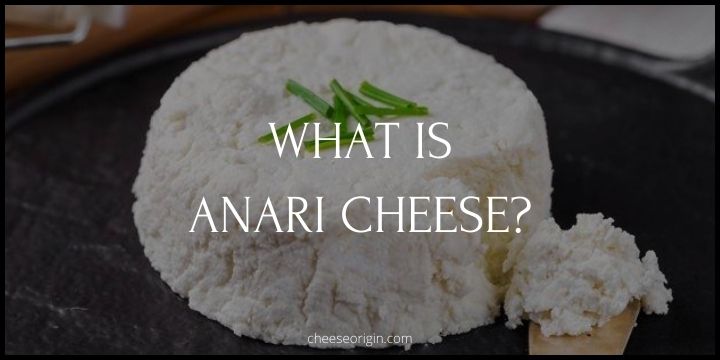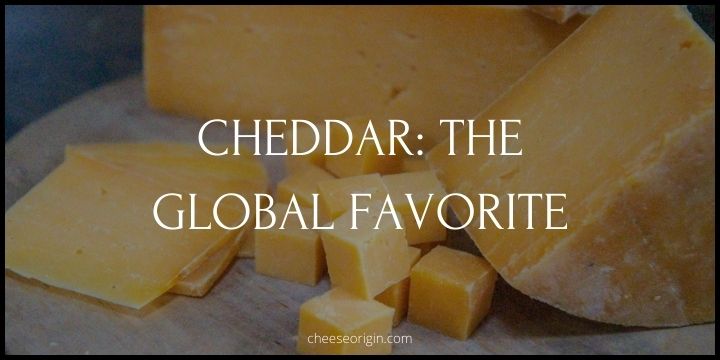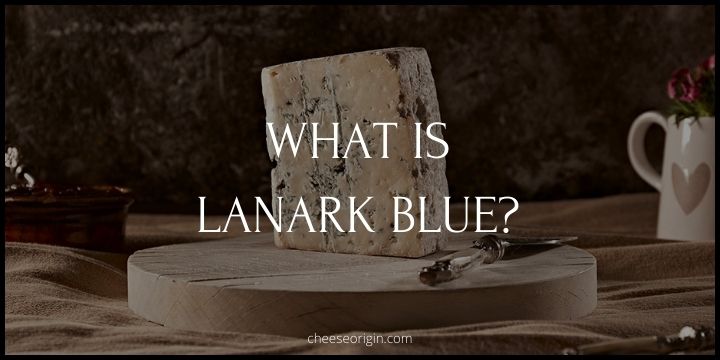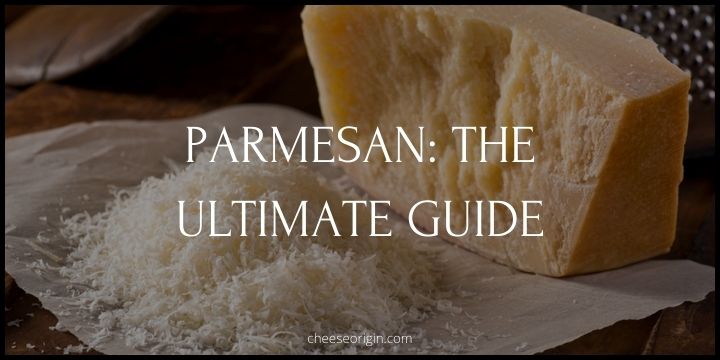What is Ricotta Salata? The Ultimate Guide to Italy’s Crumbly Cheese

Welcome to the world of Italian cheeses, where every variety has a unique story, texture, and flavor profile that adds richness and depth to dishes. Today, we’re diving into the vibrant landscape of one specific cheese – Ricotta Salata.
Often overshadowed by its more famous siblings like Mozzarella and Parmesan, Ricotta Salata is a hidden gem waiting to be discovered by cheese enthusiasts and Italian cuisine lovers alike.
In this ultimate guide, we’ll demystify this crumbly, yet creamy wonder, taking you on a journey from its humble origins in the sun-kissed regions of Italy, through the traditional process of how it’s made, to the myriad ways you can use it to elevate your culinary creations.
Whether you’re a seasoned chef or a curious foodie, prepare to embark on an exciting exploration of Ricotta Salata – Italy’s underappreciated treasure.
Quick Facts About Ricotta Salata
| Quick Facts | Description |
|---|---|
| Origin | Italy |
| Milk Source | Sheep’s milk |
| Texture | Firm, dense |
| Flavor | Mild, slightly sweet |
| Color | Pure white |
| Aging Process | 90 days |
| Uses | Ideal for grating over pasta, salads or used in baking |
| Production Process | Whey leftover from the production of other cheese is heated again, then pressed, salted and aged |
What is Ricotta Salata?
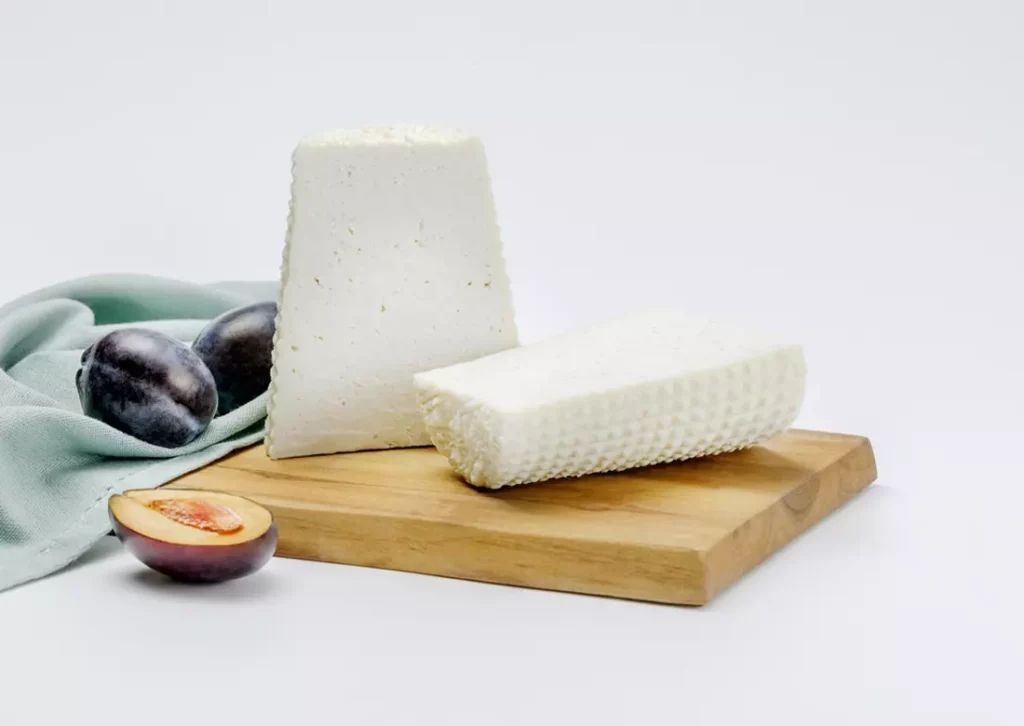
Ricotta Salata is a firm, salted, aged cheese from Italy, specifically originating from the island of Sicily. Despite its name, it’s not a type of ricotta cheese. The term ‘Ricotta’ means re-cooked and ‘Salata’ means salted.
The cheese is made from the whey part of sheep milk which is reheated, then pressed, salted, and aged for at least 90 days. This gives it a firm texture and a mildly sweet and salty flavor. It’s pure white in color and has a slightly crumbly texture when sliced.
Ricotta Salata is a versatile cheese used in a variety of dishes. It can be grated, crumbled, or cubed, making it an excellent addition to salads, pasta dishes, and baked recipes. It also pairs well with fresh fruits and white wines.
What’s the difference between Ricotta and Ricotta Salata?
Ricotta and Ricotta Salata are both Italian cheeses, but they have several key differences:
| Feature | Ricotta | Ricotta Salata |
|---|---|---|
| Production | Made from the whey leftover from other cheese production. | Made from the whey of sheep’s milk, then pressed, salted, and aged. |
| Texture | Soft, creamy, and slightly grainy. | Firmer, crumbly texture. |
| Flavor | Mild, slightly sweet flavor. | Saltier with a nuttier flavor. |
| Use in Dishes | Versatile in both savory and sweet dishes. | Typically used in salads, pasta, and grated over dishes. |
| Shelf Life | Should be consumed within one to two weeks. | Can be stored for up to six months. |
- Production: Ricotta is a fresh cheese made from the whey leftover from the production of other cheeses. This whey is reheated until the remaining proteins form curds, which are then drained to form Ricotta. On the other hand, Ricotta Salata is made from the whey of sheep’s milk. After the initial process that’s similar to Ricotta, it’s pressed, salted, and aged for at least 90 days.
- Texture: Ricotta has a soft, creamy, and slightly grainy texture. It’s often compared to cottage cheese but is typically smoother. Ricotta Salata, due to the pressing and aging process, has a firmer, crumbly texture, similar to Feta.
- Flavor: Ricotta has a mild, slightly sweet flavor, making it versatile in both savory and sweet dishes. Ricotta Salata is saltier with a nuttier flavor due to the salting and aging process, and it’s typically used in salads, pasta, and grated over dishes.
- Shelf Life: As a fresh cheese, Ricotta has a shorter shelf life and should be consumed within one to two weeks. Ricotta Salata, being an aged cheese, has a longer shelf life and can be stored for up to six months.
>> Click here to read our in-depth guide on Ricotta
What can I substitute for Ricotta Salata? 7 best substitutes
| Substitute | Description |
|---|---|
| Feta Cheese | Often cited as the top substitute for Ricotta Salata, Feta cheese hails from Greece and shares a similar crumbly texture. Although saltier and tangier, its accessibility makes it a perfect alternative. |
| Ricotta Cheese | Regular Ricotta can be used in place of Ricotta Salata, especially in recipes where the cheese is combined with other ingredients. It’s milder and creamier but lacks the salting and aging process of Ricotta Salata. |
| Ricotta Infornata | This is a baked version of Ricotta. It’s drier and firmer than regular Ricotta, making it a closer match to Ricotta Salata in terms of texture. |
| Low-Curd Cottage Cheese | Similar to Ricotta in texture, low-curd cottage cheese can be a good substitute when Ricotta Salata’s texture is not crucial to the recipe. |
| Aged Goat Cheese | Aged goat cheese has a crumbly texture and a flavor profile that can stand in for Ricotta Salata. It’s a bit tangier, but still a good match. |
| Cotija | A Mexican cheese that is very similar to Ricotta Salata in terms of texture and saltiness. It’s a good alternative, especially as a topping after the dish is cooked. |
| Mizithra Cheese | A Greek cheese that’s similar in texture and taste to Ricotta Salata. Mizithra cheese is harder and saltier, making it a good substitute, especially when grated. |
Is Ricotta Salata similar to Feta?
Yes, Ricotta Salata and Feta are somewhat similar which is why Feta is often used as a substitute for Ricotta Salata. Both cheeses have a crumbly texture and are often used in salads or as toppings for dishes.
However, there are also several differences between them:
| Feature | Ricotta Salata | Feta |
|---|---|---|
| Origin | Italy | Greece |
| Milk Source | Whey from sheep’s milk | Sheep’s milk or a mix of sheep’s and goat’s milk |
| Production Method | Salted, pressed, and dried ricotta cheese | Brined |
| Texture | Firm and crumbly | Crumbly, can range from soft to semi-hard |
| Flavor | Mild, slightly sweet and nutty | Tangy and salty |
| Use in Dishes | Used in salads, pasta, and grated over dishes | Widely used in salads (like Greek salad), pastries, and as a table cheese |
| Shelf Life | Can be stored for up to six months | Can last for several months if kept in brine |
- Milk Source: Feta is made from sheep’s milk or a mix of sheep’s and goat’s milk, whereas Ricotta Salata is made from the whey of sheep’s milk.
- Production Method: Feta is brined, which gives it its characteristic salty flavor. On the other hand, Ricotta Salata is made by salting, pressing, and drying ricotta cheese.
- Flavor: Feta has a tangy, salty flavor, while Ricotta Salata has a milder, slightly sweet and nutty flavor.
- Origin: Feta originates from Greece, while Ricotta Salata is an Italian cheese.
So while they have some similarities and can sometimes be substituted for each other, they also have distinct characteristics that might make one more suitable than the other depending on the specific requirements of a recipe.
>> Click here to read our in-depth guide on Feta
What does Ricotta Salata taste like?
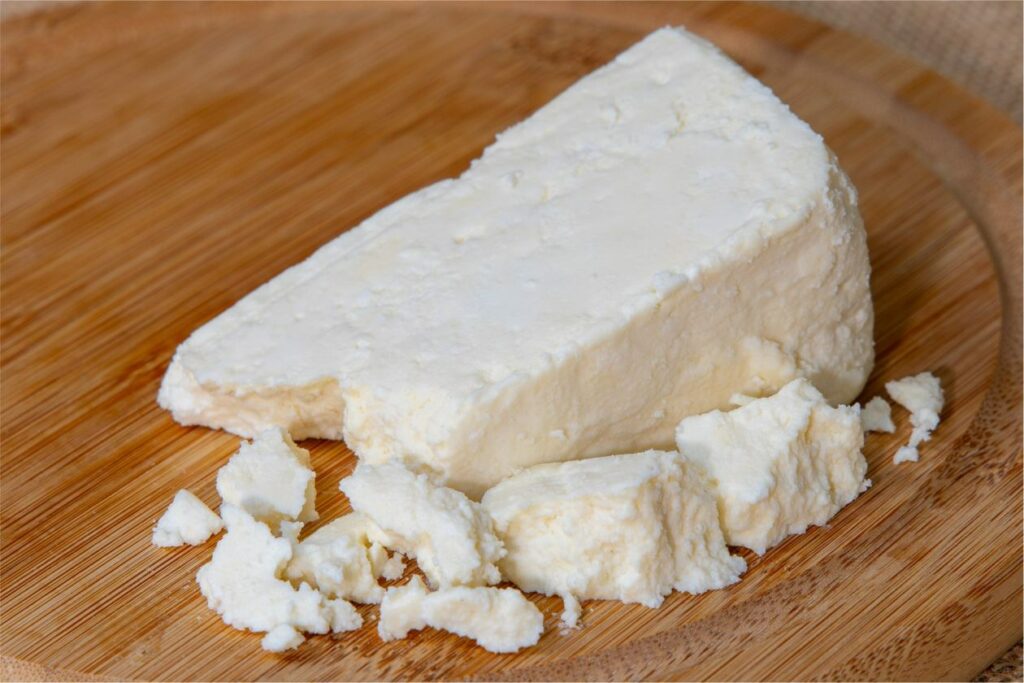
Ricotta Salata is a unique cheese with its own distinct flavor profile. It has a mild, subtly sweet, and nutty taste.
Unlike regular ricotta, which is creamy and mild, Ricotta Salata is salted and aged, giving it a more pronounced flavor.
The aging process also gives it a crumbly texture, which is similar to feta but not as tangy.
Its flavor is not overly powerful or pungent, making it a versatile cheese that can be used in a variety of dishes from salads to pasta.
Ricotta Salata tasting notes
- Mild and subtly sweet flavor
- Slightly nutty undertones
- Salty due to the salting process
- Not overly powerful or pungent
- Has a firm, crumbly texture
- Flavor becomes more pronounced with aging
- Versatile, can complement a variety of dishes
- Less tangy compared to feta
Is Ricotta Salata cheese healthy?
Ricotta Salata can be considered a part of a healthy diet when consumed in moderation.
Here are some key nutritional facts about Ricotta Salata:
- It is a source of protein, with a serving providing around 5g of protein per 28g serving, and as much as 22 grams of protein in a cup
- It contains calcium which is beneficial for bone health.
- A 28g serving of Ricotta Salata by IL VILLAGGIO contains 70 calories and 5g of fat.
- Wegmans’ Ricotta Salata has 90 calories per serving, 80% of which come from fat.
- Mariano’s Ricotta Salata Cheese contains 80 calories in a 1″ cube (1 oz) serving.
- Calabrocheese’s Ricotta Salata has 150 calories per 2oz (57g) serving, with 6.5g total fat.
Ricotta Salata nutrition facts
| Nutrient | Amount |
|---|---|
| Calories | Varies (224 – 304) |
| Total Fat | 18g |
| Carbohydrates | 0-2g |
| Protein | 14.3g – 17g |
Also read: Savor the Flavor: 20 Cheeses with the Least Lactose
How do you eat Ricotta Salata?
Here are a few ways you can enjoy it:
- Salads: Crumble or grate it over salads for a salty, tangy kick. It pairs well with fresh greens, fruits, and vinaigrette dressings.
- Pasta: Grate it over pasta dishes, especially those with tomato-based sauces. The cheese adds a creamy texture and a delightful flavor contrast.
- Grilled Vegetables or Meats: Sprinkle some grated Ricotta Salata on your grilled vegetables or meats. Its unique flavor will enhance the taste of your dish.
- Baked Dishes: You can use Ricotta Salata in baked dishes like lasagna or stuffed shells. It can add a unique twist to the flavor profile.
- Appetizer or Cheese Board: Serve slices of Ricotta Salata with olives, sundried tomatoes, and crusty bread as an appetizer. It also makes a great addition to any cheese board.
- Pizza: Sprinkle crumbled Ricotta Salata on your pizza before or after baking for a delicious twist.
- Soups: Add a bit of Ricotta Salata to your soups just before serving. It melts slightly, adding a creamy, salty element to your soup.
Where can I buy Ricotta Salata?
Ricotta Salata can be found at a variety of grocery stores and online marketplaces:
- Safeway: They offer Belgioioso Ricotta Salata in a 5 oz size. You can order for delivery or pick up from the store.
- Whole Foods Market: Emmi Ricotta Salata is available here. You can get nutrition, ingredients, allergens, pricing, and weekly sale information on their website.
- Caputo’s: You can order Ricotta Salata per 1/2 lb (8 oz) from Caputo’s. Their cheese is made from cooked sheep’s milk whey on the Italian island of Sardinia.
- Amazon: Ricotta Salata Cheese is available in a 1 lb size. They offer fast delivery for millions of items.
- Instacart: You can shop for Ricotta Salata for delivery or pickup from a variety of stores including Bi-Rite Market, Mollie Stone’s Markets, Mill Valley Market, Eataly, Rainbow Grocery, Sprouts Farmers Market, and Gus’s.
- Gourmet Food Store: They sell a unique and rare Italian formaggio which is firm and dense. It has a slightly salty flavor.
- Olio & Olive: They sell an Italian Ricotta Salata made from the whey part of sheep milk, which is pressed, salted, and aged for at least 90 days.
- Arthur Avenue: They sell aged ricotta which is creamy and flaky. It is great for eating with tomato and whole wheat bread or shaving on gnocchi.
Remember to check the availability and delivery options in your area before placing an order.
What goes well with Ricotta Salata? Pairing guide
Food that goes well with Ricotta Salata
| Category | Foods |
|---|---|
| Pasta | Pasta alla Norma, Jammy Pepper Pasta Salad |
| Fruits | Stone Fruits, Cantaloupe, Melons |
| Vegetables | Sugar Snap Peas, Chicory Family (endive or radicchio), Celery |
| Salads | Vegetable Salads, Chopped Salad, Cucumber and Melon Salad |
| Beans | Marinated Beans |
| Nuts | Walnuts |
Also read: What Fruit Goes on a Charcuterie Board?
Beverage that goes well with Ricotta Salata
| Category | Beverages |
|---|---|
| Wine | Chardonnay, Riesling, Sauvignon Blanc |
| Beer | Wheat Beers, Pilsners |
| Non-Alcoholic | Sparkling Water, Lemonade |
Also read: Best Wine and Cheese Pairings: The Ultimate Guide
The history of Ricotta Salata
Ricotta Salata is an Italian cheese made from the whey part of sheep milk, which is pressed, salted, and aged for at least 90 days. The cheese has its origins in Sicily, a region known for its rich and diverse cheese-making history.
The name “Ricotta” means re-cooked and “Salata” means salted. It was traditionally made by shepherds who wanted to use every part of the milk. After making cheese with the milk, they would take the leftover whey, add some fresh milk to it, and heat it again, which results in the formation of soft Ricotta. This soft Ricotta is then pressed, salted, and left to age, resulting in Ricotta Salata.
Ricotta Salata is a firm but milky-white cheese that’s great for grating and is often used in salads and pasta dishes. Over the years, it has gained popularity worldwide due to its unique taste and versatility in various culinary applications.
Frequently Asked Questions
1. What is Ricotta Salata in English?
“Ricotta Salata” in English translates directly to “Salted Ricotta.” This name describes the cheese-making process: it’s made from ricotta cheese that has been pressed, salted, and aged. The result is a firm, slightly salty cheese that can be grated or crumbled, commonly used in salads and pasta dishes.
2. Is Ricotta Salata salty?
Yes, Ricotta Salata is salty. This Italian cheese gets its name from the process of being salted, pressed, and aged. The result is a crumbly cheese that’s less milky than fresh ricotta and has a noticeable salty flavor. It’s often compared to Greek feta or Mexican cotija in terms of its dry, crumbly texture and salty taste. However, the level of saltiness can vary depending on the specific brand or type of Ricotta Salata you choose.
3. Will Ricotta Salata melt?
Ricotta Salata is a firm cheese that holds its shape well, so it doesn’t melt in the same way that cheeses like cheddar or mozzarella do. When heated, it may get a bit softer but it generally retains its structure. This makes it a great choice for dishes where you want the cheese to add texture and flavor without becoming gooey or melted, such as in salads, pasta dishes, or as a topping on soups.
4. How long does Ricotta Salata last in the fridge?
Ricotta Salata, like most cheeses, should be stored in a refrigerator to maintain its freshness. If properly stored, Ricotta Salata can last for about 2 to 3 weeks in the refrigerator after it has been opened.
However, this can vary depending on the specific conditions of your fridge and how the cheese was stored.
Always make sure to wrap the cheese well in wax paper or cheese paper and store it in a sealed container to help preserve its flavor and prevent it from drying out.
Also, always check the cheese for any signs of mold or off smells before consuming.
5. Can you cut the mold off Ricotta Salata?
It’s generally not recommended to cut the mold off Ricotta Salata and then consume the cheese. This is because, unlike hard cheeses where mold typically cannot penetrate deep into the cheese, Ricotta Salata is a semi-soft cheese. In semi-soft cheeses, mold can create invisible threads and spread throughout the cheese, which could potentially produce harmful toxins.
If you see mold on your Ricotta Salata, it’s best to be safe and discard the entire piece of cheese. Always remember to store your cheese properly to prevent mold growth: keep it in the fridge, well-wrapped in wax or cheese paper, and in a sealed container.
6. How long is Ricotta Salata aged?
Ricotta Salata is typically aged for a period ranging from a few weeks to a couple of months. According to Caputo Brothers Creamery, their Ricotta Salata, also known as Vecchio, is pressed, salted, and aged for at least six weeks.
Belgioioso, another cheese producer, mentions that their Ricotta Salata is aged for 30 days.
A homemade Ricotta Salata recipe suggests aging the cheese for 2-4 weeks. So, the aging period can vary based on the specific recipe or producer, but it’s generally around one to two months.
Please note that the aging process is an important part of developing the cheese’s unique flavor and texture. The longer the cheese is aged, the more pronounced these characteristics become.
7. Is Ricotta Salata cheese a probiotic?
Ricotta Salata is not typically recognized as a probiotic cheese. Probiotic cheeses are those that contain live cultures of beneficial bacteria, often added during the cheese-making process.
While the process of making Ricotta Salata does involve fermentation, which can produce beneficial bacteria, it’s important to note that Ricotta Salata is a type of cheese that is salted and aged, which could potentially reduce or eliminate any live, beneficial bacteria present.
Furthermore, probiotic content can vary greatly depending on specific brands and products, as well as how the cheese is stored and aged. If you’re looking for a cheese with probiotic benefits, some more commonly recognized options include Gouda, mozzarella, and cottage cheese. However, you should always check the product label to see if it specifies containing live and active cultures.
Please note that while certain types of cheese can contribute to your intake of probiotics, they should not be your sole source of these beneficial bacteria. A balanced diet with a variety of fruits, vegetables, whole grains, and fermented foods is the best way to ensure a healthy gut microbiome.
Also read:
- Discovering Panela: A Guide to Mexico’s Versatile Cheese
- All About Swiss Cheese: A Comprehensive Guide
- The Tale of Taleggio: Unveiling Italy’s Pungent Treasure
- Cotswold Cheese: A Taste of England’s Finest
- The Ultimate Guide to Hoop Cheese: A Southern Delight
- The Ultimate Guide to Chèvre: Exploring Goat Cheese
- Fior di Latte: A Comprehensive Guide to Italy’s Creamy Delight
